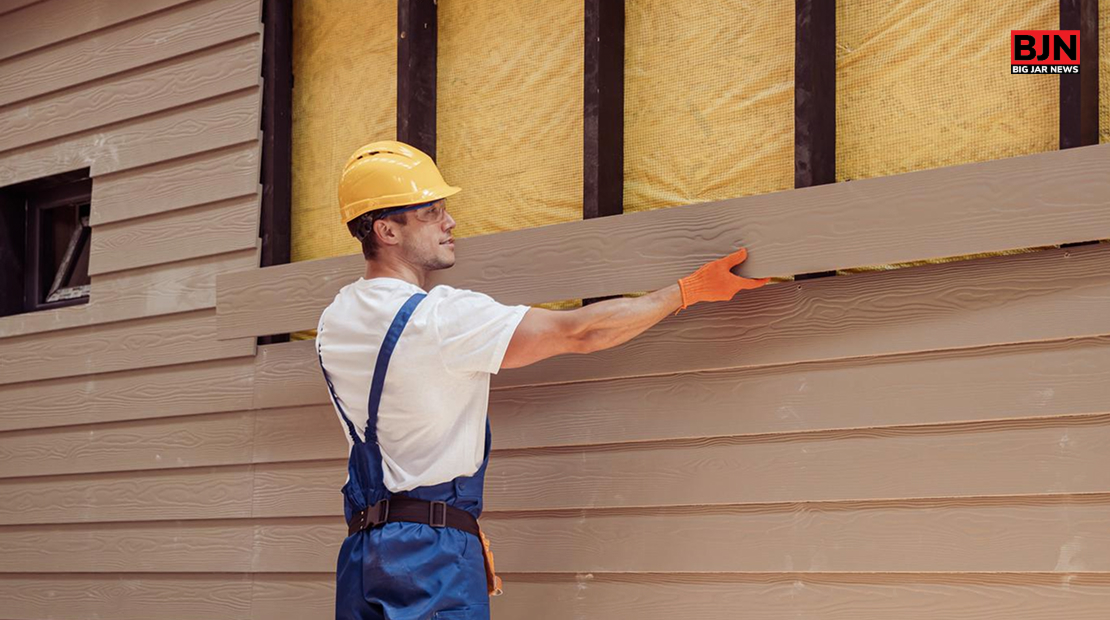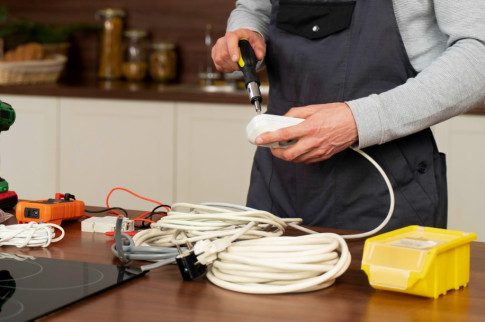Masonite Siding: Benefits, Styles & When to Replace

Table Of Contents
Key Takeaways
- Because it had major durability issues, Masonite siding was discontinued.
- There is no substitute for Masonite siding/
- Masonite siding is distinguished by material and style.
- The best thing to do in order to ensure a long life for your product is to avoid further damage.
- Masonite siding cannot be maintained forever, and its replacement is inevitable in your house. This material is highly subject to rottening, swelling, and deterioration, especially when under moist conditions.
- If you are not ready for full replacement, sealing and painting of your existing siding will help.
- When in doubt, it is always best to seek professional advice on the next course of action.
Understanding the History and Issues with Masonite Siding
So, what is Masonite siding? “Masonite” or Hardboard was a type of siding developed as an alternative to either real wood or vinyl siding.
Masonite was one of the many companies that manufactured hardboard siding. What does Masonite hardboard siding consist of? It was made from a mixture of wood chips and resin; it looked more like natural wood than vinyl.
It was supposed to be lower maintenance than its counterparts and last longer, but time showed this product was not living up to the hype. About 20 years and class-action lawsuits later, it is no longer manufactured.
Background of Masonite Siding
It was a wonder product: cheap and easy to install; that is what caught the builder’s attention, as they started installing the product everywhere. Fast forward to the present, the headaches started to add up.
Common Masonite Siding Problems
If you are choosing Masonite Siding, be well aware of these common problems;
- Infestation by pests – termites, ants, and bees can burrow in. Check for mud tubes and hollow sounds.
- Warping – Boards can bow and curve due to the absorption of water.
- Rotting – The material can swell or rot because of overexposure to moisture. Check for soft spots.
- Mold – If there is moisture within the wall cavity, mold and mildew will grow, then spread beyond the siding.
Why was Masonite Siding Discontinued?
Masonite siding showed significant problems with durability. Homeowners began to experience issues with the product becoming water damaged.
This was such a general problem that class-action lawsuits arose, greatly hurting the reputation of Masonite siding.
The suits cited the performance of the material failing to live up to its touted longevity and low maintenance that led to its decreased popularity and eventual discontinuation.
What can I Replace Masonite Siding with?
In my own view, Hardie Siding is among the very best options for Masonite siding replacements. Because hardboard siding was discontinued, many homeowners have since found themselves in a dilemma.
Those who had this siding placed on their home face the challenge of trying to find suitable replacement materials all in vain as there isn’t a true match.
The lack of availability of Masonite siding also provided challenges in repair or maintenance of the installed siding, which has led many homeowners to consider the complete replacement of their siding, while others work to replace sections individually as the material continues to rot on their home.
How do I identify Masonite?
If you think that you have installed Masonite Siding in your home and you are still not sure about it, simply use this guide to identify the Masonite Siding.
1. Triple Four
Triple four Masonite is identified by measurement of how many laps are in each of the twelve sections. It will have three laps. Each lap is going to be four inches wide and that’s where it gets the name, it has three, four inch laps per piece.
2. Double Six
Double Six Masonite uses the same concept as Triple Four. It is identified by how many laps per twelve inches can be measured. This siding will have two six inch laps per piece.
3. Twelve Inch Smooth
Smooth Masonite can look a lot like Hardie siding because of that, and it may be hard to identify. Luckily, I have two easy methods;
- Stick the blade of a pocket knife in the siding. If it gives at all, bingo, you have Masonite. If it is really hard and feels kind of like stone or cement, you probably have Fiber Cement Siding.
- The other is to look for bubbling paint at the bottom of the laps. The closer to ground level the better. A lot of Masonite that is install close to the ground starts to rot. You’ll know it’s not Hardie because it simply doesn’t rot.
4. Carolina Bead
Carolina Bead Masonite is smooth with a small bead at the bottom of the lap. Each lap is roughly seven and a quarter inches wide.
5. T1-11 Masonite
T1-11 Masonite resembles traditional plywood panels, and they are installed in large 4’x8’ sheets. If you have this kind of Masonite, then you’re in luck because T1-11 Plywood siding is also made and looks like a decent match when a repair is made.
Tips to Prevent Further Damage to Your Siding
1. Regular Inspections: Periodically inspect your siding for signs of damage, especially after severe weather conditions.
2. Seal Cracks and Gaps: Use caulk to seal any small cracks or gaps you find during inspections. This prevents water from seeping in and causing further damage.
3. Trim Overhanging Branches: Overhanging branches can scrape and damage the siding during windy conditions. Trimming these types of branches helps protect the siding.
4. Ensure Proper Drainage : Make sure that your gutters and downspouts are clear and working properly so that water doesn’t build up near the siding.
Tips for Temporary Siding Fixes
To anyone who has ever asked themselves, “Can Masonite siding be repaired?”, here are some tips I have to share with practical, temporary repairs that depict quick and inexpensive means of mending such siding.
These steps provide immediate relief and can help hold the integrity of your siding until you are ready for a full replacement.
- Find the Problem Spot – First, check for water damage on your masonite siding. The first sign is usually paint that looks bubbly. Not sure if it’s water damage? Try poking the siding with a pocket knife. If it goes in easy, then yep, there’s a problem.
- Water can be Sneaky – Water doesn’t always get in where you think it does. It can sneak in one place and move to another inside the wall. You might find water damage far from where the water first got in. It’s really important to have someone who knows a lot about siding help find where the water’s coming in.
- Stop the water – Once you find where water gets in, near the edge of the roof or in the gutters, you’ve got to stop it permanently. That may mean adding flashing or repairing shingles. If you don’t stop the water first, it can get caught in the wall and begin to rot the interior wood, not just the siding.
- Fix the siding – Masonite siding is very difficult to match. Sometimes someone will say they have some that is similar, but then it really isn’t. I have tried various things for people, and often they don’t like the look or it simply won’t last.
Frequently Asked Questions (FAQs)
Here are a few questions and queries on the topic of Masonite siding that others have asked and you might feel helpful at the same time.
To caulk (or re-caulk) Masonite siding:
1. Use a high-quality latex caulk designed for outdoor use.
2. Thoroughly apply caulk to all visible cracks and seams, ensuring comprehensive coverage to safeguard against rot and mold.
3. Pay particular attention to areas where siding boards meet trim pieces.
4. Remember, caulking is a crucial defense against water intrusion, so it’s not a step to skimp on. Prioritize thorough caulking to protect your siding effectively.
If not maintained or installed correctly, common issues that may arise include the risk of rot or water damage.
Regular inspections and prompt repairs can help address such issues and prevent further damage.
Masonite siding utilizes sustainable materials, including responsibly sourced wood fibers from managed forests. Its long lifespan also reduces the need for frequent replacements, making it an environmentally conscious choice.
Indeed, if Masonite siding sustains damage, it can undergo repairs. The extent of the damage determines whether specific sections of the siding need replacement to restore its integrity and appearance. It is advisable to consult with professionals for complex repairs or extensive damage.
You May Also Like

October 6, 2023
7 Steps To Become The Best Smart Home Installer In 2023

January 20, 2021
Top Tips for Revamping Your Basement

July 23, 2022






















